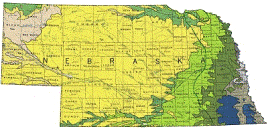US Geological Survey
Document Type
Article
Date of this Version
2009
Citation
Ecotoxicology and Environmental Safety 72 (2009) 1642–1651
Abstract
We studied the ecological effects of mining-derived metals on riffle-dwelling benthic fishes at 16 sites in the Viburnum Trend lead–zinc mining district of southeast Missouri. Fish community attributes were compared to watershed features and to physical and chemical variables including metal concentrations in sediment pore water and fish. Ozark sculpin (Cottus hypselurus), rainbow darter (Etheostoma caeruleum), Ozark madtom (Noturus albater), and banded sculpin (Cottus carolinae) were the most abundant fishes collected. Species richness and density of riffle-dwelling benthic fishes were negatively correlated with metal concentrations in pore water and in fish. Sculpin densities were also negatively correlated with metal concentrations in pore water and in fish, but positively correlated with distance from mines and upstream watershed area. These findings indicate that metals associated with active lead–zinc mining adversely affect riffle-dwelling benthic fishes downstream of mining areas in the Viburnum Trend. Sculpins may be useful as a sentinel species for assessing mining-related impacts on fish communities.


Comments
U.S. Government Work